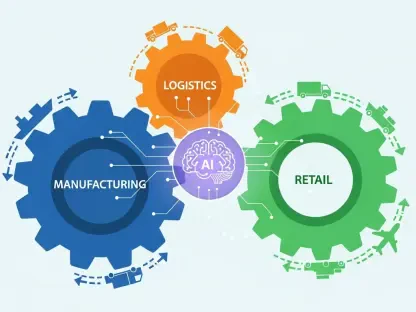In a significant convergence of scholarly minds, the North, Central, and South American Chapter of the Association for Computational Linguistics (NAACL) hosted its annual conference in Albuquerque, New Mexico. This year witnessed an unprecedented submission rate, with 3,099 papers vying for selection, marking a 22% acceptance rate. The event has become a beacon for cutting-edge research, fostering collaboration and exploration of new horizons in computational linguistics across the Americas. USC Viterbi’s Information Sciences Institute (ISI) played a critical role, presenting nine insightful papers, underscoring its influential presence in the field.
Exploring New Frontiers in Language Processing
The conference conveyed immersive experiences and unveiled breakthroughs, bringing forth discussions rich with insights into the evolving field of language processing. Central to ISI’s contribution was the advancement of language models, with an emphasis on understanding and applications through interpretability, reasoning, creativity, and alignment with human values. The tutorial, “Creative Planning with Language Models: Practice, Evaluation and Applications,” led by ISI researchers Alexander Spangher and Tenghao Huang, offered profound insights into integrating planning methodologies within language models, thus emulating human traits such as creativity and reasoning.
Key Revelations from Leading Talks
Prominent among the presentations was a paper titled “LLM The Genius Paradox: A Linguistic and Math Expert’s Struggle with Simple Word-based Counting Problems,” by Nan Xu and Xuezhe Ma. This study fundamentally explores why highly sophisticated models excel in complex tasks yet stumble on basic ones, shedding light on underlying factors like tokenization and training data constraints. The research calls for attention to step-by-step reasoning, aiming to enhance performance in straightforward linguistic tasks.
In-Depth Panel Discussions
The conference facilitated dynamic panel discussions focusing on emerging themes in computational linguistics. Experts deliberated over the juxtaposition of language model capabilities and their limitations, scrutinizing how advancements can be juxtaposed with alignment to human values. Discussions revealed varying viewpoints on preference optimization and its role in making models more ethically and practically aligned with real-world scenarios.
Interactive Workshops: A Dive into Collaborative Learning
Offering hands-on experiences, the event’s workshops and demonstrations engaged attendees physically and intellectually. Attendees participated in interactive sessions emphasizing practical learning, where innovative methodologies and applications were explored through collaborative activities. These workshops provided an arena for engaging with novel technologies and understanding their applicability in everyday contexts.
Technological Innovations: Unveiling the Future
A highlight of the conference was the exhibition of groundbreaking technologies, where product demos and new innovations took center stage. The paper, “Style Transfer with Multi-iteration Preference Optimization (STAMP),” presented by Shuai Liu and Jonathan May, introduced applied strategies from machine translation for style transfer, improving fluency, meaning, and style through iterative techniques.
Toward the Future of Computational Linguistics
As the curtains fall on NAACL ’25, the discourse surrounding the future of computational linguistics leaves a promising outlook for the field. The insights from this conference further the narrative, stressing the importance of refining language models to better align with human preferences and reasoning. By exhibiting a commitment to innovation, ISI and its collaborators advance the potential for computational linguistics, confronting existing challenges and paving the way for future developments. The event provides momentum for ongoing research and fosters a spirit of collaboration, anticipating the next breakthroughs in this rapidly evolving domain.









